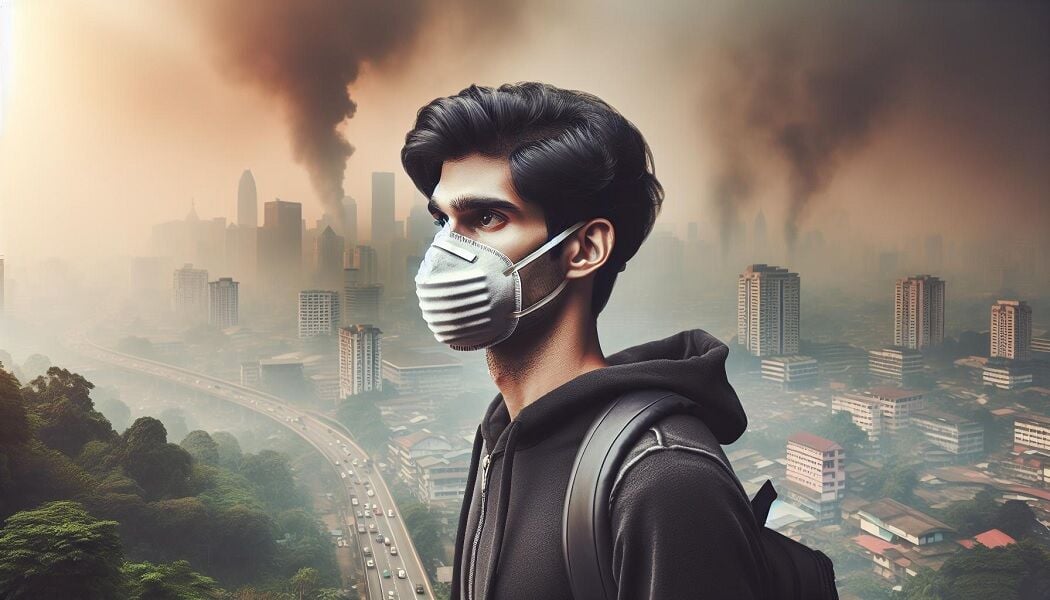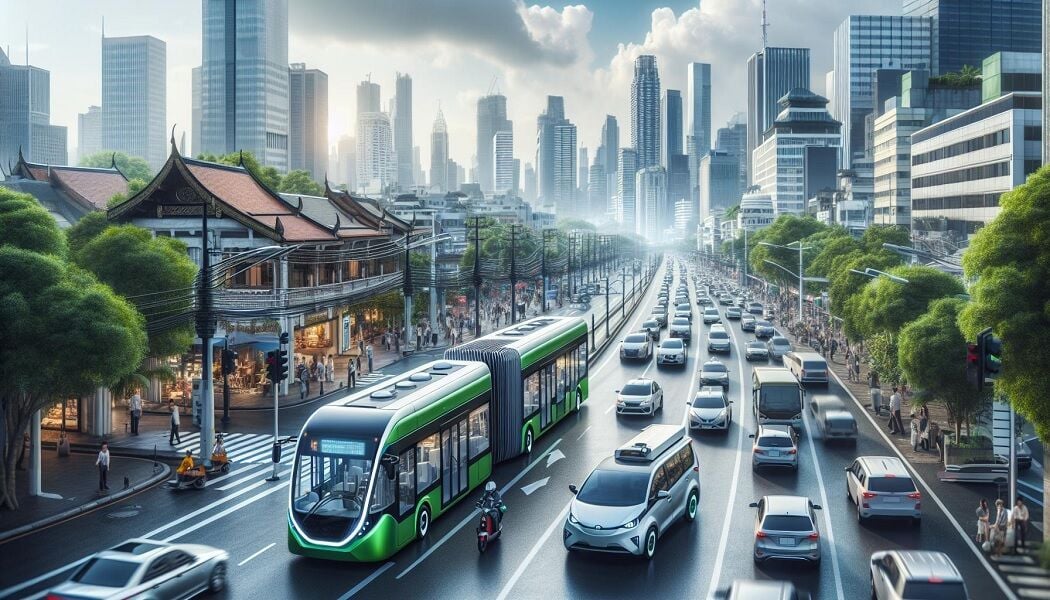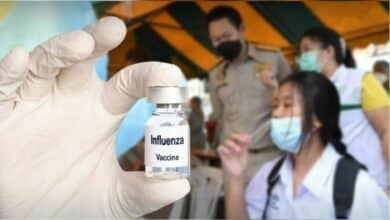Thailand battles rising health risks from PM2.5 air pollution levels

Ever wondered why the air in Thailand often feels thicker and harder to breathe? The culprit behind this is PM2.5, microscopic particles that can wreak havoc on your health. Thailand faces a significant challenge with high levels of PM2.5, particularly during certain times of the year. Understanding the causes behind these elevated levels is crucial for both residents and visitors alike.
The sources of PM2.5 in Thailand are multifaceted, stemming from both human activities and natural occurrences. From the exhaust of older diesel vehicles choking the streets to agricultural practices that blanket the air, the reasons behind the high PM2.5 levels are as complex as they are concerning. Let’s dive deeper into what contributes to the air quality issues in Thailand and how they impact your daily life.
Factors contributing to high PM2.5 levels in Thailand

When exploring what causes high PM2.5 levels, it’s crucial to consider the significant sources contributing to this issue in Thailand. Let’s break down these various sources.
Traffic emissions
First and foremost, traffic emissions stand out as a primary culprit. Thailand’s roads are bustling with older, diesel-fueled vehicles emitting considerable pollutants into the air. These vehicles, lacking in modern emission-control technology, release fine particulate matter, known as PM2.5, which not only degrades air quality but also poses serious health risks. To mitigate these emissions, strict vehicle inspections, especially targeting older diesel vehicles, can serve as an effective starting point. Such measures aim at reducing the amount of harmful substances released into the atmosphere, hence lowering PM2.5 levels significantly.
Industrial activities
Industrial activities contribute significantly to the PM2.5 problem as well. With approximately 140,000 factories, many of which lack rigorous monitoring and reporting of emissions, Thailand faces a challenge in keeping industrial pollution in check. These emissions come from a variety of operations, including power generation and manufacturing processes, each releasing particulates and other pollutants that exacerbate PM2.5 concentrations. Tightening regulations, such as introducing a comprehensive emissions inventory database and demanding detailed reporting of PM2.5 emissions, are vital steps towards addressing this issue. These actions will not only make industries more accountable but also provide clear data to help steer policy and interventions.
Agricultural burning
Lastly, agricultural burning significantly influences PM2.5 levels. This practice, predominantly used to clear crop stubble post-harvest, releases vast amounts of fine particles into the air. Although it’s a traditional and cost-effective method for farmers, the environmental and health costs are substantial. Offering practical and affordable alternatives to open burning, such as subsidising machinery for stubble removal, could dramatically reduce the pollutants released from agricultural activities. Additionally, fostering a shift towards sustainable farming practices will play a critical role in curbing PM2.5 levels attributed to agriculture.
Each of these sources of PM2.5 emissions presents its own set of challenges and solutions. By addressing them with targeted and implementable strategies, significant progress can be made towards improving air quality in Thailand and safeguarding the health of its residents.
Impact of high PM2.5 levels on public health


When exploring what causes high PM2.5 levels, it’s crucial to understand the profound health implications tied to these microscopic pollutants. Your well-being might be at stake without you even realising it, especially if you live in areas with frequent spikes in PM2.5. This section delves into how these tiny particles affect your body, focusing on respiratory issues, cardiovascular diseases, and particularly vulnerable groups.
Respiratory problems
Breathing in PM2.5 can wreak havoc on your respiratory system. These particles are so small, they bypass your nose and throat’s defences, penetrating deep into your lungs. Here, they can cause a range of issues from short-term problems like coughing and throat irritation to long-term damage such as reduced lung function and chronic conditions like asthma and chronic obstructive pulmonary disease (COPD). If you have existing respiratory issues, it’s even more critical to be aware of the air quality in your area.
Cardiovascular diseases
The impact of PM2.5 isn’t limited to your lungs; your heart’s at risk too. These particles can enter your bloodstream, leading to elevated blood pressure, arterial blockage, and heart rate variability. Over time, your risk of experiencing more severe cardiovascular events, such as heart attacks and strokes, increases. Staying informed about local air quality and taking steps to minimise your exposure on high PM2.5 days can be a life-saving decision.
Impacts on vulnerable populations
For pregnant women, exposure to dirty air has been linked to adverse birth outcomes, like low birth weight and preterm delivery, further proving what causes high PM2.5 levels is more than an environmental concern—it’s a public health emergency. Older adults and individuals with pre-existing respiratory or cardiovascular conditions may experience exacerbated symptoms and new health issues, highlighting the crucial need for targeted protective measures for these populations.
Understanding the health impacts of PM2.5 is vital for anyone living in areas prone to air pollution. By staying informed and proactive, you can protect yourself and your loved ones from the invisible danger lurking in the air.
Governmental efforts to address air pollution

Air quality monitoring
You’re in a country dedicated to battling the surge of PM2.5 levels, and it starts with keeping an eagle eye on air quality. Through the establishment of advanced air monitoring stations scattered across urban and rural areas, authorities actively track pollutants, including the notorious PM2.5. This real-time data isn’t just for keeping records; it’s your beacon, guiding timely responses to air quality deterioration. It empowers you to make informed decisions about your outdoor activities, protecting your health.
Implementation of emission control measures
Addressing the root cause of high PM2.5 starts with cutting down emissions at their source. The Thai government has taken significant strides in this direction by setting stringent emission standards for vehicles and industries, known as the Euro 4 standards. But why stop there? Plans are underway to transition to even cleaner Euro 5 and 6 standards, ensuring that new cars on the road are part of the solution, not the problem. Moreover, stringent checks and balances are in place for industrial discharges, making sure that businesses contribute to cleaner air, not just their bottom line.
Public awareness campaigns
You’ve probably seen them – campaigns and initiatives aimed directly at empowering you with knowledge about air pollution and how to mitigate its effects. These range from educating the public about the health risks associated with PM2.5 to promoting environmentally friendly practices that reduce air pollution. It’s all about fostering a culture of responsibility and awareness, where every individual plays a part in combating air pollution. By staying informed and making conscious choices, you become a crucial ally in the fight for cleaner air.
In the battle against air pollution, understanding what causes high PM2.5 levels is just the beginning. Among the primary culprits, cars, especially older diesel models, play a significant role in fueling PM2.5 pollution. To tackle this issue head-on, adopting cleaner vehicle technologies, enforcing stricter emission standards, and encouraging public transportation and eco-friendly alternatives are essential steps. By making these changes, we can significantly reduce the contribution of vehicular emissions to air pollution, paving the way for cleaner air and a healthier future for all.
Parts of this article, including images, may have been generated using AI tools before an editor reviewed it.

































